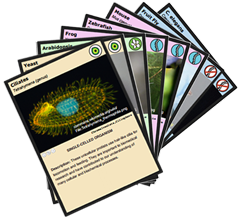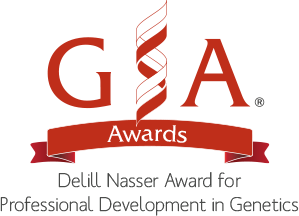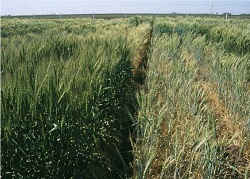| June 10, 2015 | |||||
 |
 |
 |
 | |||||||||||
Society News
We need your help! Phylo: The Trading Card Game has released a beta version of a GSA Model Organisms Deck. This deck was created in an attempt to raise awareness about the diverse nature of experimental questions, techniques, and model organisms in our field. We are looking for beta-testers to provide feedback not only on the game, but on the specific cards themselves. If you are interested, and we hope you are, here's what you need to do: PLAY! And then let us know how we can make it better. [more…]
Postdocs:
Last chance to submit your entry for #WormArt2015 at the upcoming C. elegans meeting; the deadline is June 14, 2015. The GSA Journals Overleaf LaTeX Templates are now available for submitting manuscripts to GENETICS and G3 via the Overleaf collaborative cloud-based writing and reviewing tool. The templates allow authors to easily prepare and edit their manuscripts. Authors can then submit manuscripts to GENETICS or G3 using the PDF and source files generated from Overleaf. Templates are available for both GENETICS and G3.
Splitting Gibbons: Evolutionary relationships between the four gibbon genera have remained elusive, despite many genetic studies. In the latest issue of GENETICS, Veeramah et al. combined whole genome sequencing data with a coalescent-based Approximate Bayesian Computation method and demonstrate that no single bifurcating topology exists. Instead, all four genera likely diverged around the same time, possibly due to biogeographic changes and forest fragmentation approximately five million years ago.
 The trouble with HLA diversity: The most diverse of all human genes encode a set of proteins at the frontline of our immune system. Most HLA (human leukocyte antigen, or major histocompatibility complex) genes have dozens—or even hundreds—of alleles present in the human population, so across the genome region as a whole, there are thousands of different alleles. This variation can affect individual susceptibility to infectious and autoimmune diseases and is of great interest to geneticists studying human evolution and population history. Read more about why HLA data from population genomics studies are often treated as suspect. |
Included in this Issue:
| ||||||||||
Members
in the News
Huffington Post’s list of 12 women who were scientific pioneers in the past decade include GSA members Elizabeth Blackburn and Carol Greider. Find out how they broke the glass ceiling in the STEM world. GSA member Edward Marcotte was a guest on NPR’s Science Friday discussing his research replacing over 400 yeast genes with human versions. He found that almost half of yeast were “successfully humanized.” An in-depth feature from Nature News on the promise and perils of CRISPR gene editing quotes a number of GSA members and GENETICS editors including Ethan Bier, George Church, Bruce Conklin, James Haber, John Schimenti, Andrea Ventura, and James Wilson. Three recipients of GSA Undergraduate Travel Awards have been showcased recently:
Jenna, Ben, Tykayah, and the other 12 recipients of Undergraduate Travel Awards will present their research at GSA’s 20th International C. elegans Meeting later this month in Los Angeles.
Policy The White House Office of Science and Technology Policy (OSTP) is encouraging the community to share stories about basic research on social media using the hashtag #BasicResearch. In a blog post last week, OSTP Associate Director for Science Jo Handelsman motivates the need for basic research, but acknowledges that "those who pay for the national research agenda may not always be aware of the early and fundamental work that makes today’s technologies possible." Share your stories about why basic research is important to you on Twitter, Facebook, Instagram, and more with the hashtag #BasicResearch. [more…] Community Announcements The Division of Comparative Medicine (DCM) within NIH’s Office of Research Infrastructure Programs (ORIP) is hosting a symposium, Linking Disease Model Phenotypes to Human Conditions, September 10-11, 2015, in Rockville, Maryland. The purpose of the meeting is to convene a colloquium on the current status of phenomics and its role in closing the gap between biomedical research and clinical medical practice. Registration is free, but space is limited, so sign up early. And finally... Thanks for helping us reach 4,200 likes on Facebook and 5,600 followers on Twitter! Keep up with highlights like these by joining GSA on Facebook, Twitter, LinkedIn, and Google+:
|
|||||||||||
| Do you have a brief announcement to submit to GSA
e-News? e-News items include news about GSA members – new positions, book publication, awards or grants received and obits; short policy items; brief research news items and grant programs; and, award nomination announcements. Deadline for next issue: June 19, 2015. Send items (and feedback) to Beth Ruedi, eruedi@genetics-gsa.org. | |||||||||||







